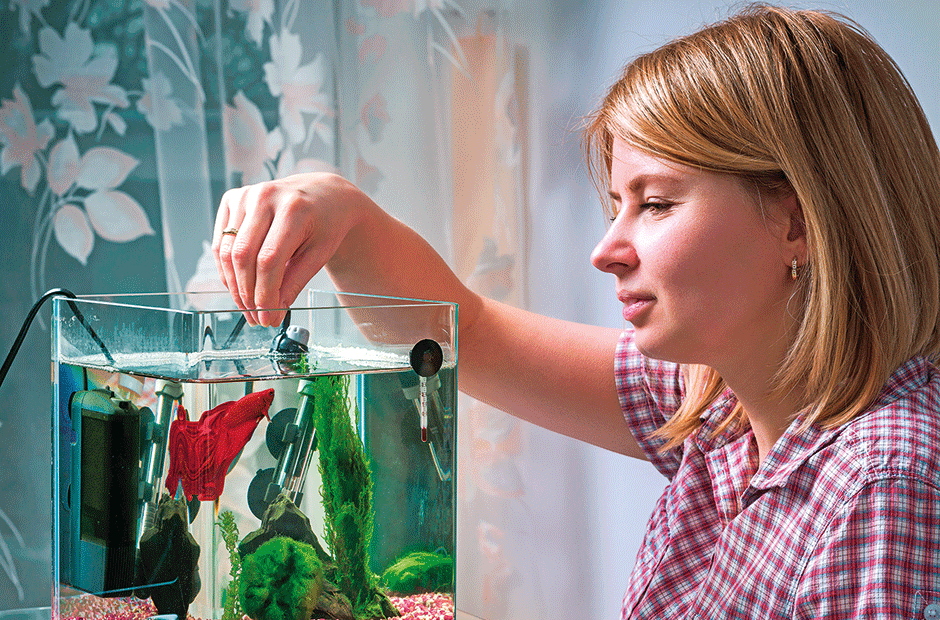Aquariums function as both living interactive art and a source of young children’s wonder. With the ethereal effect of fluorescent light reflecting off the scales of colourful marine creatures, it’s easy to lose yourself staring into a fish tank’s depths for many hours. However, it’s a sensitive environment and one that requires regular care and maintenance.
Here are four things to be aware of if you’re planning to foster a few fish.
1) Start fresh, not salty
While it might be tempting to find a few clownfish to narrate a live Finding Nemo re-enactment to your four-year-old, it’s important to note that this species isn’t quite as hardy as the eponymous Pixar swimmer.
Indeed, saltwater fish generally require a higher standard of care than their freshwater brethren. Beautiful tropical varieties are used to swimming through warmer climes, so a heater will be required to maintain a temperature close to 30 degrees Celsius inside an air-conditioned environment. The heater’s size will vary according to the size of your tank.
For aquarium newbies, it’s best to start with freshwater species. Not only are they hardier than those from the sea but their environments are also less expensive to set-up and maintain.
2) Chemistry matters
Maintaining a healthy, clean environment for your finned friends is all about balance. There are seven variables that require regular monitoring inside the tank: water hardness, alkalinity, ammonia, nitrates, nitrites, pH and chlorine.
Because setting up the optimal environment takes time, it’s important to do so well before introducing your pets to the water. Different species have varying needs. For example, while the easy-going danios fish can thrive in a pH range of 7.0-7.8 and 50ppm to 140ppm alkalinity, the high-maintenance blue discus needs a 6.3-7.2 pH to survive — and you need to replace half the tank’s water every two weeks.
An important piece of aquarium equipment for maintaining a healthy environment is the filtration system. A fish’s natural waste is laden with toxins that, if left unchecked, will eventually poison your pet. A filtration process, which may be biological, chemical or mechanical in nature, works to clear out excrement and other decaying organic matter from the water and prevent ammonia stress.
Biological filtration relies on microorganisms such as bacteria to convert ammonia into relatively harmless nitrate in a process that takes time. A mechanical filter is a far simpler tool: It acts as a screen or strainer, trapping physical particulate manner and keeping the tank’s water clean. Finally, there’s chemical filtration. A single cubic inch of activated carbon — a substance resembling crushed pieces of charcoal — is capable of extracting toxins from up to two gallons of aquarium water for 30 days.
3) Food stuff
While fish look like one of the easiest pets to feed, it’s a slightly more complicated business than simply sprinkling some flakes into a tank. Like other animals, fish may be carnivores, herbivores or omnivores. After determining this, you need to find out whether your underwater friends are bottom or top feeders. Sinking pellets may be required for the former, and floaty flakes for the latter
Whether it’s frozen, dry or live food, the best time to feed your fish is at the beginning and end of the day. Keep the tank’s lights on for at least half an hour after each meal.
4) Numbers and compatibility
You may have come across a certain rule of thumb while researching on the right volume of water for your fish: one gallon per inch of fish. While this is easy to remember, it’s not correct. Different species produce varying amounts of waste and have different energy and movement requirements.













